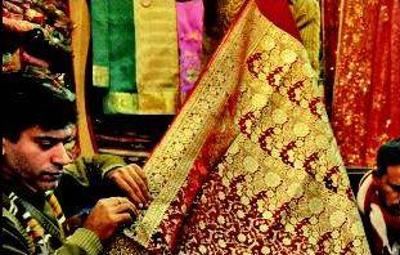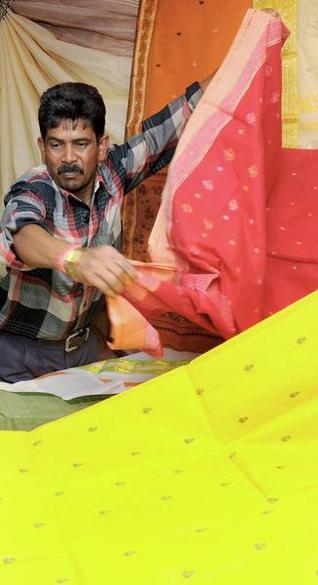In a bid to showcase to the world the craftsmanship of traditional weaves and tribal work from Bengal and other parts of India, five Indian women running design houses in Britain’s capital have come together to organize an exhibition at London’s Asia House on Sunday.
A software consultant, Rajeswari Sengupta who works with weavers from tribal Bengal will display the products under her label, The Far East Studio.
“We have been working with master artisans from different parts of Bengal to revive textile traditions. At the exhibition, I will have an entire collection of hand-woven jamdani from Bangladesh, hand-embroidered kantha, Tangail products for buyers in the UK. There will also be sarees in organic cotton and natural dye, besides other drapes, including silk, by national award-winning artisans,” said Sengupta.
The other designers at the show will be Jyoti Chandhok, who will bring chikankari works from Lucknow, Neetu Jalali who will showcase Kashmiri Pashmina, Josephine Nirmala who will come with her Rajasthani silver jewellery and Dimple Kalla, who will showcase hand-painted furniture.
Hailing from different parts of India, the five designers shifted to London almost a decade ago but they still swear by Indian handloom, jewellery and artefacts. Sengupta said, “The five of us are from different parts of India and we have managed to bring a piece of all the four corners of the country at this exhibition which will have works of weavers, embroiders and jewellery designers from the grassroots level.”
The group’s aim is to support and promote handwoven works. “The UK has seen a lot of big exhibitions where Indian products are showcased in abundance. But this might be the first initiative by Indian women to showcase the works of grassroots weavers and artisans,” Sengupta added.
Apart from the loyal Indian customer base, the exhibition is expected to have a good response from the English as well. “They are very interested in sarees and handwoven textiles. Even stoles, shawls from Kashmir, kantha dresses are quite a rage here. Through these expos, we are looking to create a platform for Indian weavers who can directly interact with buyers,” Sengupta added.
source: http://www.timesofindia.indiatimes.com / The Times of India / News Home> City News> Kolkata / Swasti Chatterjee / TNN / October 10th, 2016

